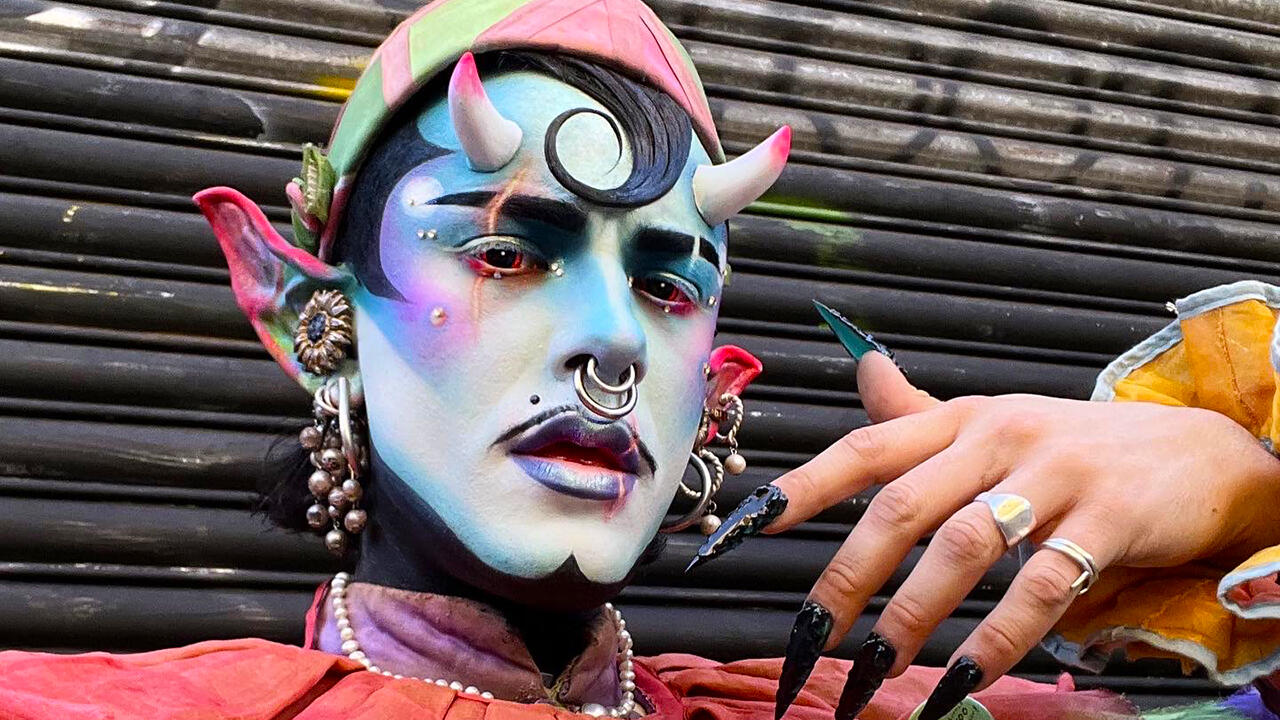Europe’s Largest Museum of Erotica
The museum was founded by Beate Uhse, Germany’s self-declared ‘pioneer of the sexual revolution’ and the owner of the world’s first sex shop
The museum was founded by Beate Uhse, Germany’s self-declared ‘pioneer of the sexual revolution’ and the owner of the world’s first sex shop

When the Berlin Wall fell in November 1989, thousands of East Germans poured through the border crossing points to explore the centre of West Berlin. They were particularly curious about certain Capitalist commercial ventures that Socialism had denounced as decadent: do-it-yourself markets, cheap discount businesses and sex shops. The ink was barely dry on the official declaration of German unity in October 1990 when one clear winner emerged from ‘reunification’: the West German porn industry. In the forefront was Beate Uhse’s sex shop chain and mail order erotica business, closely followed by Europe’s leading female porn producer Teresa Orlowski (‘VTO’, ‘Foxy Lady’). Queues formed outside the sex shops, the department stores of the sexual revolution, in Berlin’s red light district. Neatly arranged on the shelves were all the branded goods that the GDR knew only by hearsay: battery-powered dildos in three sizes, inflatable ‘rubber girls’ and ‘stud tablets’ (DM 6.99 for a pack of ten). Sociologists were amazed - long-term studies showed that East Germans were far more sexually liberated than West Germans. The regime collectivised compulsively, and the people reacted by making sexuality a peculiar form of social opposition. And then - scarcely reunified - they started imitating Western consumer behaviour, buying magazines, videos and CD-ROMs, taking out subscriptions to telephone sex services and porn channels, like Orlowski’s London-based ‘Adult Channel’.
Since sexuality was redefined as a cultural commodity during the 60s student movement, a private porn videotheque has been standard equipment in many German households alongside the party cellar and the satellite dish. Feminist anti-porn campaigners of the 80s, led by Alice Schwarzer and Andrea Dworkin, denounced pornography as the highest form of kitsch, but this did not prevent it from colonising everyday life through advertising and the mass media. The German porn industry boomed in the early 90s. As there was a shortage of commercial premises, the GDR border huts were converted into sex shops - an ironic symbol of the take-over of the GDR by Western capital. Uhse, the woman who opened the world’s first sex shop in 1962, now has over 50 shops (with 2 million new East German mail order customers) and the ‘Blue Movie’ cinema chain.
Now this self-declared ‘pioneer of the sexual revolution’ has opened Europe's largest museum of erotica in the prestigious Leinweberhaus near Bahnhof Zoo in Berlin to celebrate her company’s 50th anniversary. Over 3,000 objects are displayed on three floors, arranged according to epoch and genre. They range from the giant phallus of Bali to Biedermeier snuff-boxes and Chinese ink-wash nudes. Trash rubs shoulders with the culturally significant: one small gallery is devoted to the Berlin genre painter Heinrich Zille, another pays tribute to Magnus Hirschfeld, the father of sexology, who was driven into exile by the Nazis. But, surprisingly, these widely differing exhibits do provide a context for each other. They form a normative frame that develops socially and historically, and this establishes a distinction between erotica and pornography. The museum mixes erotic and sexological exhibits, commercial and didactic text panels. This is not really meant to ennoble pornography; it aims to bring middle-class collectors’ erotica into line with commercially developed pornography and to legitimise the latter as a cultural commodity. Those who find this impudent cultural circumlocution outrageous have lost the struggle to distinguish between erotica and pornography and remain isolated campaigners against ‘declining’ moral standards.
But Uhse has broken yet another taboo. Her museum of erotica is an integrated sex shop. There is practically no chance of avoiding the porn products. The entrances and exits, even the emergency exits, lead past video cabins and sales counters. The middle-class public got very worked up about this insolent violation of the boundary between visiting a museum and shopping - although Uhse has merely followed current museum shop practice. At the opening ceremony, she adapted John F. Kennedy’s famous sentence - ‘Ich bin eine Berlinerin!’ - thus laying claim to political backing as well as descent from a series of sexological ancestors: Iwan Bloch, Albert Moll, Magnus Hirschfeld and Max Marcuse (in the 50s atmosphere of desire for the old order, she was prosecuted for selling condoms and distributing books on sex education).
The Museum of Erotica legitimises pornography as part of a Western cultural heritage and capitalises on the fact that it is anchored in mass culture. An overall marketing strategy and a sense of dominance through aesthetics were needed to do this. ‘We want to be the world-wide style-leader’ is Uhse's credo. Her ingenious mail order system has brought ideas of ‘value’ and ‘taste’ into the tiniest village along with her products, and this has shaped German sexual patterns for decades, fixing behavioural roles and turning clichés inside out. The magic of signs has made pornography a clean business. Beate Uhse and Teresa Orlowski make Jeff Koons, Paul McCarthy and Elke Krystufek look like wicked pornographers.
Main image: Underwear in a Beate Uhse sex-store, 2003. Photograph and courtesy: THOMAS LOHNES/DDP/AFP via Getty Images























